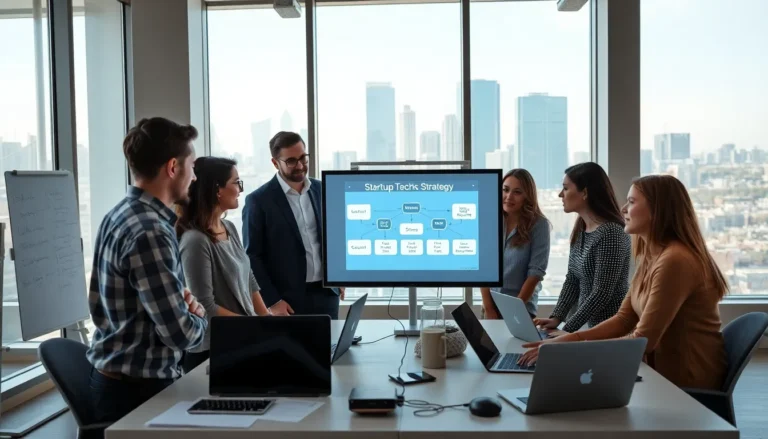Table of Contents
ToggleAre you ready to transform your workplace into a powerhouse of innovation and motivation? Jump into the world of leadership training activities, where leadership skills aren’t just discussed, they’re put into action. With the right training, anyone can become a great leader, and no, you don’t need a cape or a magic wand. These activities are designed to hone essential skills, foster teamwork, and create an inclusive environment where everyone can shine. In this text, we’ll explore the significance of leadership training, various engaging activities, and how to measure their impact. So buckle up: it’s going to be a fun ride.
Importance Of Leadership Training

Leadership training is not just a box to check: it’s a strategic investment in an organization’s future. To navigate the complexities of modern workplaces, effective leadership is essential. Well-trained leaders are better equipped to motivate their teams, drive performance, and adopt a visionary approach toward challenges. Also, companies that prioritize leadership development experience enhanced team collaboration, increased employee retention, and improved overall morale. It creates an environment that promotes creativity and innovation. If a firm fosters leadership from within, it often reaps the rewards of loyalty and commitment from employees who feel valued and empowered.
Types Of Leadership Training Activities
When it comes to leadership training activities, variety keeps things exciting. Engaging activities can significantly enhance the learning experience and retention of new skills. Here are a couple of engaging types:
Team-Building Exercises
Building trust and camaraderie is crucial in leadership development. Team-building exercises serve as the glue that holds a team together. Picture this: leaders facing fun challenges that require collaboration and strategic thinking. From obstacle courses to problem-solving games, each exercise helps develop communication skills, fosters mutual respect, and uncovers hidden strengths within team members.
Role-Playing Scenarios
Role-playing scenarios take training to another level by immersing participants in real-world situations. Imagine someone stepping into the shoes of a difficult customer or a team member. By practicing how to respond effectively, leaders develop critical thinking and emotional intelligence. It’s not just about what you say, but how you respond that truly counts.
Workshops And Seminars
Workshops and seminars play a substantial role in delivering leadership training effectively. These gatherings can range from half-day sessions to extended multi-day events, all tailored to nourish the leadership skills of participants.
Interactive Learning Techniques
Interactive learning techniques are at the forefront of modern educational approaches. Hands-on activities engage everyone in meaningful discussions and collaboration. Rather than simply sitting through lectures, participants will take part in group activities that promote interaction and critical thinking. It keeps the energy high and allows attendees to apply their newly acquired knowledge in real-time.
Outdoor Adventure Activities
Now, who said leadership training has to be confined to four walls? Outdoor adventure activities add an exhilarating twist to traditional workshops. Picture leaders navigating a ropes course or embarking on a hiking trip. It’s not just about testing physical limits: such experiences build resilience, adaptability, and trust among team members. The outdoors can teach lessons that a boardroom setting might not offer.
Evaluating The Effectiveness Of Training
Measuring the effectiveness of leadership training ensures organizations get the most out of their investment. Evaluating training efforts is crucial in making necessary adjustments and improvements.
Feedback Mechanisms
Incorporating feedback mechanisms into training programs allows leaders to gather insights from participants. Surveys and interviews provide valuable information about what worked, what didn’t, and how the training influenced participants’ behaviors. By creating an open atmosphere where feedback is welcomed, organizations can refine future training activities to better suit their needs.
Long-Term Impact Assessment
While short-term evaluations are vital, long-term impact assessment takes effectiveness to the next level. Companies must look beyond immediate outcomes to understand how leadership training influences organizational culture and performance over time. Leaders should track key performance indicators, monitor employee engagement levels, and assess team dynamics months after training sessions. With this comprehensive assessment, organizations can celebrate successes and identify areas needing improvement to refine their approach further.





